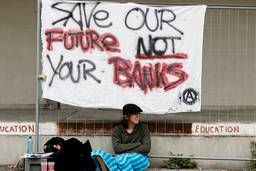As unemployment figures reached their highest level since 1983 in November, the monthly job reports have been a grim reality for people of color.
Amid assurances of economic recovery, jobless rates for African Americans are at a 28-year high (15.7 percent), while Latino workers aren’t faring much better (13.2 percent). Both rates are higher than the 10.2 percent national average. The jobless statistics in minority communities have historically been higher than the general population.
So it’s a bit odd to read an article by USA Today last week that said Asian Americans are fairing relatively better in the economy with an unemployment rate of only 7.5 percent, a number “far lower than the rates for whites, blacks, Hispanics or the nation as a whole.” (White unemployment is 9.5 percent).
What’s the reason?
The newspaper says higher education levels, tendency to work in high-paying professional jobs, coupled with a strong family network to support small businesses has helped Asian Americans remain resilient through the recession.
But the narrative is not as rosy as the article portrays. It reveals a fundamental problem for stats concerning Asian Americans: it lumps a group with diverse socio-economic histories into one composite and overlooks the disparities within Asian communities. Moreover, it largely ignores the working class who often face language and structural barriers.
It might be hard to argue against the statistics: as a whole, Asians do indeed have higher education levels and higher median income, as USA Today states. But the numbers vary significantly by ethnicity. A report by New York University and the College Board last year found, for example, that while Pakistanis and Indians have at least a bachelor’s degree, more than half of Hmongs and Cambodian adults have never finished high school.
Income and poverty levels also differ by ethnic background, creating a gap between the professionally affluent and the less privileged groups. The article sparsely highlights these complexities, but focuses mostly on white collar jobs. It ignores the working people, whose stories were highlighted at the first national hearing on workers’ rights for Asian Pacific Workers at the AFL-CIO headquarters in Washington, D.C., this month.
John Delloro, the national president for Asian Pacific American Labor Alliance, a AFL-CIO affiliate, commented on the current problems in a statement:
Contrary to misperceptions about Asian Pacific Americans, segments of this workforce still experience a litany of abuses in their jobs and worksites, including wage theft, union suppression and immigrant worker exploitation.
Cultural factors were also the basis for low unemployment figures, the article said. Asian Americans are more likely to work jobs beyond their qualifications instead of being unemployed, an example to demonstrate a strong cultural work-ethic. But the claim seems dubious. Writing for Hyphen Magazine, Jennifer Nguyen offers a rebuttal:
“Finally, I was a bit amused by the article’s final argument: that quite simply, unemployment is not accepted in the Asian American community. I question whether, in this apocalyptic economy, any one race endorses unemployment.”
The piece, despite its best intentions to put a positive angle during these trying times, only tells the stories of the professional and management class. And explaining the socio-economic exceptionalism of Asian Americans has tended to put the group on a pedestal as the model minority.
Not only does it obfuscate any systemic problems among Asian groups, but also unfairly pits them against other minorities as a false staple of success, a move that belittles the distinct historical and structural inequalities that exist in communities of color. As fellow Working In These Times contributor Michelle Chen reported yesterday, racial wealth gaps and economic insecurity for minorities are real in this economy.







